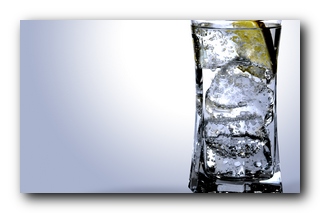|
Carbon Filter Replacement andReplacement Carbon Filters For Your HomeEveryone using a drinking water filter should be informed about carbon filter replacement. In some cases a dirty activated carbon filter can cause more harm than the raw water before the filter. It’s very important to keep your filters fresh. Replacement carbon filters come in a wide range of styles and prices. To help you find the correct carbon replacement filter for your situation I will break the most popular filters down into groups. I’ll share the advantages and disadvantages of each type of carbon filter. The most popular carbon filters will fit into one of these groups;
In real estate the 3 most important things are location, location, and location. In carbon filtration it’s contact time, contact time, and contact time. In general, the smaller the filter, the less contact time. That’s why I consider the tiny faucet-mount filters nearly useless. The smallest filter that I’d recommend for a single faucet and/or refrigerator dispenser is called the 10” filter. You may find it described as a 9 ¾” or 9 7/8”, it’s still considered a 10” filter. Most of the carbon filters in this size are typically about 2 ½” in diameter. There are other larger filters available but for this discussion of the types of filters available let’s use the 10” by 2 ½” as our example. This is the most popular size of filter readily available to the public. Since the size of the filter is limited, and contact time is very important, the manufacturers have come up with a few tricks to increase contact time. The most popular one is powdered carbon as opposed to granular carbon. You may have seen granular activated carbon in an aquarium filter. It’s just little, irregular shaped chunks of charcoal. If you fill a 2 ½” by 10” cartridge with these chunks you have a pretty good filter with decent contact time. Now if you take that same charcoal and pulverize it into a powder, you can get even more of it into the cartridge because there is less airspace between the chunks. Now you have more contact time with the same 10” filter, giving a better quality of filtration. The third type, the carbon-impregnated cellulose filter is sort of a paper-type sediment filter that has small carbon particles attached to the fibers. The 2 ½” by 10” space is taken up mostly with cellulose fiber so there isn’t nearly as much carbon as the granular or block filter. Three Filter Types Compared
Identifying Filter Types
The filter package should tell you which type of filter you’re looking at. If you don’t have the original package these tips should help you. The GAC filter is usually the easiest to identify of the three. The carbon will be enclosed in a smooth plastic tube. If you squeeze it you can feel the granules move inside the cartridge. The Carbon Block and the Carbon-impregnated cellulose filters will sometimes look nearly identical. Many will have a plastic netting around the sides of the media with round plastic end caps. The block filter will usually be noticeably heavier and will have a more solid, dense feel to it when squeezed. If you’re looking for a filter to do the double-duty of chlorine/chemical removal AND sediment removal, the carbon block filter will usually offer the best of both. The GAC isn’t a good sediment filter; in fact, it’s not uncommon for them to allow carbon dust into the water for a short time. For this reason the GAC is not a good pre filter on an RO system. All of these filters have their place in our industry; there is no “best” filter for every application. If you use one of the standard 10” filter housings you’ll have the option of trying all three different filter types on your water. Return From Carbon Filter Replacement to How To Purify Water
|

